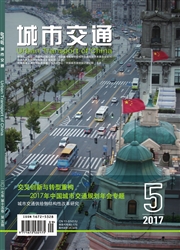

 中文摘要:
中文摘要:
在既有理论基础上扩展了城市群多中心网络的度量工具,考察中国12个城市群总部—分支机构的企业关联网络,比较梳理了地级城市空间联系的拓扑结构。实证研究发现:①包括长三角、珠三角和京津冀三大典型城市群在内,中国城市群内部网络系统的拓扑结构依然发育不完善,在联系数据方面均呈现出一定的稀疏矩阵特征,空间组合关系均为树状结构。②总部区位(出度)的层级性差异均高于分支机构区位(入度)的层级性差异,显示出城市群内部空间"流"的不对称性。③针对12个城市群内部网络的拓扑结构聚类分析表明:长三角、珠三角、京津冀、山东半岛、海峡西岸地区的城市群内部网络联系较为紧密,呈现出一定程度的一体化网络特征;其中三大典型城市群存在明显的企业总部集聚核心,其余城市群内部的网络联系松散,跨城企业联系比重较低,在拓扑结构上大多呈现出以省会或副省级城市为指向的向心式联系。
 英文摘要:
英文摘要:
This study puts forward a systematic analysis tool of urban agglomeration polycentric networks according to the space of flow theory, investigates the enterprise association networks of the twelve urban agglomerations in China empirically, and identifies the basic patterns of prefecture- level cities' spatial relationships through classification. The result indicates that the internal network topology of Chinese urban agglomerations,including the three most typical urban agglomerations(Yangtze River Delta- YRD, Pearl River Delta- PRD, and Beijing- Tianjin- Hebei region- BTH), is still far from reaching maturity. Specifically, the data of connection to some extent constitute a sparse matrix and the spatial association shows a tree structure. The hierarchy of headquarter locations(outflow) is more concentrated than that of branch locations(inflow), which shows asymmetry of the flows within the urban agglomerations. At the urban agglomeration level, two basic network connection patterns can be identified using cluster analysis of the twelve urban agglomerations internal network topology.The first type including the Yangtze River Delta, Pearl River Delta, Beijing-Tianjin-Hebei region, Shandong Peninsula, and the western side of the Taiwan Straits, is internally closely connected urban agglomeration networks and shows characteristics of integrated networks. The three most typical urban agglomerations(YRD, PRD, and BTH) are distinct headquarter hubs. The other type containing the rest of the urban agglomerations is internally loosely connected networks and the percentages of cross-city connections are lower than the first type. Most of them show a centripetal structure around the provincial capital or sub-provincial cities topologically.
 同期刊论文项目
同期刊论文项目
 同项目期刊论文
同项目期刊论文
 期刊信息
期刊信息
